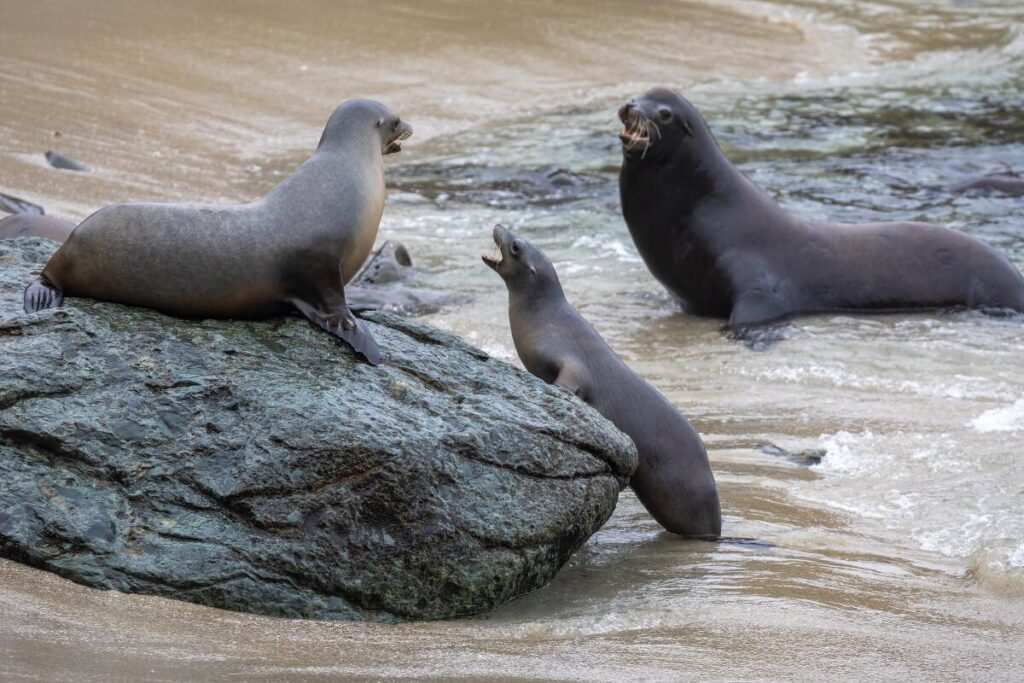After 20 years of peaceful surfing, RJ LaMendola was suddenly attacked and dragged off his board by a sea lion off Southern California.
RJ LaMendola posted on Facebook saying , “It looked possessed.” And also said , The animal was “feral, almost demonic.”
Sea Lion linked to harmful algal bloom
Scientists discovered that the sea lion that attacked surfer RJ LaMendola off the coast of Southern California suffered from domoic acid toxicosis, a neurological disorder caused by toxic algae.
In California, a growing number of animals are exhibiting signs including seizures and lethargy, which frequently result in death. Concerns have arisen about the annual impact of the poisonous algal bloom, which has spread down the coast for four consecutive years. LaMendola, who suffered injuries and a torn wetsuit during the attack and was hospitalized, said, “It felt like I was being hunted.”
While swimming for a lifeguard test at Long Beach, a sea lion repeatedly bit 15-year-old Phoebe Beltran, just south of RJ LaMendola’s attack. As the attacks persisted, she reported feeling both frightened and excruciatingly painful.
Californians are afraid as a result of these two attacks, which have garnered international attention. John Warner, CEO of the Marine Mammal Care Center in Los Angeles, says the poisons in the algae are impacting the sea lions’ behavior.
According to him, these creatures usually don’t attack people since they are not inherently hostile. The poisonous algae confuses them, likely causing seizures, and their compromised perceptions lead them to act out of fear.
What kind of animals are sea lions?

The Otariidae family of marine animals, which also includes fur seals, includes sea lions. They can walk on land thanks to their long front flippers, external ear flaps, and the ability to swivel their hind flippers forward.
Barks, growls, and roars are among of the vocalizations that make these marine mammals famous. While females and pups use various noises to communicate, adult males frequently bark loudly to mark their territory and entice females.
Being gregarious creatures, sea lions frequently establish sizable colonies on land. Particularly during the breeding season, when males create and protect female harems and territories, they participate in a variety of vocalizations, postural displays, and physical encounters.
Males have territorial tendencies during the breeding season, creating and protecting territories that draw females. A female sea lion gives birth to a single pup, nurses it, and cares for it until she weans it, usually at 12 months old.
Although sea lions are often gregarious and fun, some environmental conditions, such as toxic algal blooms that produce neurotoxins like domoic acid, can cause odd and violent behaviors. Animals exposed to these poisons may become confused, have seizures, and become more aggressive.


 US and Pakistan Seal New Trade Deal with Promises and Oil
US and Pakistan Seal New Trade Deal with Promises and Oil  Why Canadians Are Upset with Americans in 2025
Why Canadians Are Upset with Americans in 2025  Trump Demands US Attorney General Share Epstein Data
Trump Demands US Attorney General Share Epstein Data  Trump Claims ‘Inflation Is Dead’ but June Surge Signals Otherwise
Trump Claims ‘Inflation Is Dead’ but June Surge Signals Otherwise  Has Trump Sided with Ukraine Over Russia in the War?
Has Trump Sided with Ukraine Over Russia in the War?